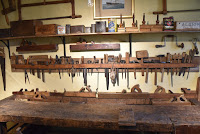.
Today we docked at Punta Arenas, our first (and last) stop in Chile. This is the world’s most southern city. It was inhabited by Thuelche people for 14 500 years before 1520 when Ferdinand Magellan sailed through the strait that bears his name. It was not settled until 1848 when Portugal established a penal colony here. By the early 20th century, Europeans had made their fortunes in sheep ranching.
Our first stop was the Patagonia museum, similar to Upper Canada Village, where we saw old equipment, much of it steam driven, There were typical homes and shops.
Today we docked at Punta Arenas, our first (and last) stop in Chile. This is the world’s most southern city. It was inhabited by Thuelche people for 14 500 years before 1520 when Ferdinand Magellan sailed through the strait that bears his name. It was not settled until 1848 when Portugal established a penal colony here. By the early 20th century, Europeans had made their fortunes in sheep ranching.
Our first stop was the Patagonia museum, similar to Upper Canada Village, where we saw old equipment, much of it steam driven, There were typical homes and shops.
Our next stop was "the sixth most beautiful cemetery in the world". Eva Braun was a Russian woman who came to Chile and married a rich farmer who died a short time later. She took over his business. She brought tradesmen from Europe to design and build beautiful mansions. Upon her death, she left a large plot of land for the City Cemetery where we saw elaborate tombs and mausoleums marking the final resting place for many of the region's founding families.
This a statue to the "unknown aboriginal", honouring the indigenous peoples, being explained by our excellent guide Diego. In the Maggiorino Borgatello Museum, displays included natural history, aboriginal culture, and Antarctica.
After a stop at a scenic lookout and the Market Square, we found local beer (Austral lager) at a corner restaurant and bar. This was a perfect day - sunny, 15 C (55 F), no wind. According to Diego, this is unusually good weather for Patagonia.
This a statue to the "unknown aboriginal", honouring the indigenous peoples, being explained by our excellent guide Diego. In the Maggiorino Borgatello Museum, displays included natural history, aboriginal culture, and Antarctica.
After a stop at a scenic lookout and the Market Square, we found local beer (Austral lager) at a corner restaurant and bar. This was a perfect day - sunny, 15 C (55 F), no wind. According to Diego, this is unusually good weather for Patagonia.




